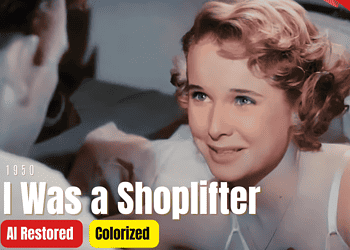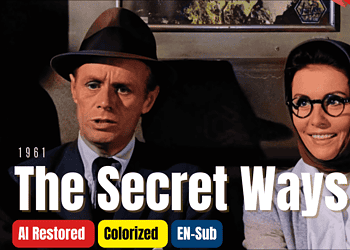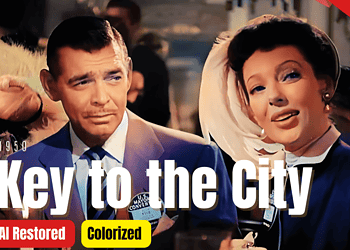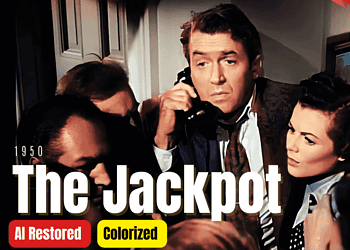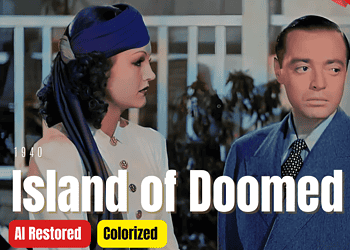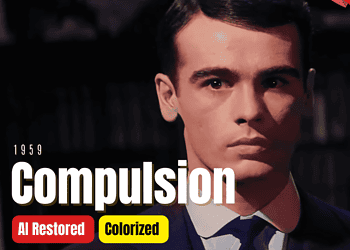Revisiting the Dark World of Film Noir: A Classic Movie Recap of Vicki (1953) Starring Jeanne Crain
Film noir is a genre of film that emerged in the 1940s and 1950s, characterized by its dark and cynical themes, atmospheric lighting, and morally ambiguous characters. The term “film noir” was coined by French film critics who noticed a trend in American crime films that shared similar visual and narrative elements. The genre often explores themes of crime, corruption, and the dark underbelly of society.
Characteristics of film noir include low-key lighting, stark contrasts between light and shadow, and a sense of foreboding atmosphere. The visual style often reflects the moral ambiguity of the characters and the world they inhabit. The stories are typically told from the perspective of a flawed protagonist, often a hard-boiled detective or a femme fatale. The narrative structure is often non-linear, with flashbacks and multiple plot twists.
Film noir has its roots in German Expressionism and the hard-boiled detective novels of the 1930s and 1940s. The genre reached its peak in Hollywood during the post-war years, reflecting the anxieties and disillusionment of the time. Many film noirs were influenced by the war and its aftermath, exploring themes of betrayal, paranoia, and existential dread.
Key Takeaways
- Film Noir is a genre characterized by darkness and intrigue
- Vicki (1953) is a classic example of Film Noir
- The plot of Vicki revolves around a murder mystery
- The characters of Vicki include femme fatales and hard-boiled detectives
- Jeanne Crain is the leading lady of Vicki
Vicki (1953): A Classic Example of Film Noir
Vicki is a classic example of a film noir released in 1953. Directed by Harry Horner, the film stars Jeanne Crain as Vicki Lynn, a young woman who becomes entangled in a murder mystery. The film received mixed reviews upon its release but has since gained a cult following for its stylish visuals and compelling performances.
Critics praised Vicki for its atmospheric cinematography and moody lighting, effectively capturing film noir’s dark and mysterious world. The film’s use of shadows and light created a sense of tension and unease, adding to the overall sense of intrigue. The performances were also highly praised, with Jeanne Crain delivering a standout performance as the titular character.
Vicki can be compared to other film noirs of the era, such as Double Indemnity (1944) and The Maltese Falcon (1941). Like these films, Vicki features a morally ambiguous protagonist and a complex plot of twists and turns. The film also explores themes of betrayal and deception, common tropes in the film noir genre.
The Plot of Vicki: A Murder Mystery Unfolds
Vicki tells the story of a young woman named Vicki Lynn who becomes embroiled in a murder mystery. After witnessing a murder at a nightclub, Vicki is pursued by both the police and the killer. As she tries to unravel the truth behind the murder, she becomes entangled in a web of deceit and danger.
The plot of Vicki is filled with twists and turns, keeping the audience on the edge of their seats. As Vicki delves deeper into the mystery, she discovers that nothing is as it seems and that everyone has their own hidden agenda. The film explores themes of betrayal, greed, and the corrupting influence of power.
One of the key themes in Vicki is the idea that appearances can be deceiving. The characters in the film are not who they initially appear to be, and their true motivations are slowly revealed throughout the story. This theme reflects the moral ambiguity of film noir and adds to the overall sense of intrigue.

The Characters of Vicki: Femme Fatales and Hard-Boiled Detectives
| Vicki Nelson | Private investigator and former police officer | Female | Private Investigator | Determined, independent, brave |
| Henry Fitzroy | Vampire and romance novelist | Male | Novelist | Charming, witty, loyal |
| Mike Celluci | Police detective and Vicki’s ex-partner | Male | Police Detective | Skeptical, protective, stubborn |
| Coreen Fennel | Vicki’s assistant and tech expert | Female | Assistant | Intelligent, resourceful, quirky |
| Norman Bridwell | Medical examiner and friend of Vicki’s | Male | Medical Examiner | Intelligent, curious, eccentric |
Vicki features a cast of complex and morally ambiguous characters, a hallmark of film noir. The main characters include Vicki Lynn, played by Jeanne Crain, and Steve Christopher, played by Jean Peters. Vicki is a young woman who finds herself caught up in a dangerous world of crime and deception. Steve is a hard-boiled detective who becomes Vicki’s ally and love interest.
Vicki is a classic femme fatale, a seductive and manipulative woman who uses her charms to get what she wants. She is both the victim and the perpetrator, caught between her desire for love and her need for self-preservation. Jeanne Crain delivers a nuanced performance, capturing Vicki’s vulnerability and her cunning.
Steve Christopher is the archetypal hard-boiled detective, a tough and cynical man who is determined to uncover the truth. He is driven by a sense of justice and a desire to protect Vicki from harm. Jean Peters brings depth to the character, portraying Steve as a complex and flawed hero.
These characters embody the archetypes of film noir, with Vicki representing the femme fatale and Steve representing the hard-boiled detective. The film explores their motivations and actions, delving into the dark and morally ambiguous world they inhabit.
Jeanne Crain: The Leading Lady of Vicki
Jeanne Crain was an American actress who rose to fame in the 1940s and 1950s. She was known for her beauty and talent, often playing wholesome and innocent characters. In Vicki, Crain took on a more complex role, portraying a femme fatale caught in a web of deceit.
Crain’s performance in Vicki was widely praised by critics, who commended her ability to convey both vulnerability and strength. She brought depth to the character of Vicki, making her more than just a seductive temptress. Crain’s portrayal of Vicki added layers of complexity to the film, elevating it beyond a typical murder mystery.
Crain’s role in Vicki showcased her versatility as an actress, proving she could tackle more challenging and complex roles. While she is often remembered for her wholesome image, Vicki demonstrated Crain’s ability to delve into darker and more morally ambiguous characters.
The Cinematography of Vicki: Shadows and Light
The cinematography of Vicki is a standout feature of the film, capturing the dark and mysterious world of film noir. The film makes use of low-key lighting and stark contrasts between light and shadow to create a sense of tension and unease. The use of shadows adds to the overall sense of mystery and intrigue.
The visual style of Vicki reflects the moral ambiguity of the characters and the world they inhabit. The dark and moody lighting creates a sense of foreboding, hinting at the danger that lurks beneath the surface. The use of shadows also adds depth to the visuals, creating a sense of depth and texture.
The cinematography of Vicki can be compared to other film noirs of the era, such as Double Indemnity and The Maltese Falcon. Like these films, Vicki uses lighting and composition to create a sense of atmosphere and mood. The visual style adds to the overall sense of tension and suspense, drawing the audience into the world of the film.
The Music of Vicki: Setting the Mood for Noir
The music of Vicki plays an important role in setting the mood for the film noir genre. The score, composed by Leigh Harline, effectively captures the dark and mysterious atmosphere of the film. The music adds to the overall sense of tension and unease, heightening the suspense.
The score for Vicki features haunting melodies and dissonant chords, creating an eerie and unsettling atmosphere. The music reflects the moral ambiguity of the characters and the world they inhabit. It adds depth to the visuals, enhancing the overall cinematic experience.
The use of music in Vicki can be compared to other film noirs of the era, such as Laura (1944) and Out of the Past (1947). Like these films, Vicki uses music to create an atmosphere and enhance the emotional impact of the story. The music adds another layer of depth to the film, immersing the audience in its dark and mysterious world.
The Legacy of Vicki: A Timeless Classic of Film Noir
Vicki has left a lasting impact on the film noir genre, cementing its status as a timeless classic. The film’s stylish visuals, compelling performances, and complex plot have made it a favorite among fans of the genre. It has influenced countless filmmakers and continues to be studied and analyzed by scholars.
Vicki’s impact on the film noir genre can be seen in its exploration of themes such as betrayal, corruption, and moral ambiguity. The film pushed the boundaries of what was considered acceptable in Hollywood at the time, challenging traditional notions of morality and storytelling.
The film’s influence can be seen in later films such as Chinatown (1974) and L.A. Confidential (1997), which also explore themes of crime, corruption, and moral ambiguity. Vicki paved the way for these films, pushing the boundaries of what was considered acceptable in Hollywood.
Revisiting Vicki: Why This Film Still Resonates Today
Despite being released over six decades ago, Vicki still resonates with modern audiences. The film’s themes of betrayal, corruption, and moral ambiguity are still relevant today. The complex characters and intricate plot continue to captivate viewers, making it a timeless classic.
Vicki explores the dark underbelly of society, shining a light on the corrupting influence of power and greed. These themes are still prevalent in today’s world, making the film’s message as relevant as ever. The film serves as a cautionary tale about the dangers of unchecked ambition and moral compromise.
Vicki can also be compared to other contemporary films that explore similar themes, such as Gone Girl (2014) and Drive (2011). Like Vicki, these films delve into the dark and morally ambiguous world of crime and deception. They challenge traditional notions of morality and storytelling, pushing the boundaries of what is considered acceptable in mainstream cinema.
The Enduring Appeal of Film Noir and Vicki
Film noir continues to captivate audiences with its dark and mysterious world. The genre’s exploration of themes such as crime, corruption, and moral ambiguity resonates with viewers, making it a timeless classic. Vicki is a prime example of film noir, with its stylish visuals, compelling performances, and complex plot.
Vicki’s impact on the film noir genre cannot be overstated. The film pushed the boundaries of what was considered acceptable in Hollywood at the time, challenging traditional notions of morality and storytelling. It paved the way for future films that explore similar themes and continue to captivate audiences.
In conclusion, Vicki is a classic example of film noir that continues to resonate with modern audiences. Its stylish visuals, compelling performances, and complex plot make it a timeless classic. The film’s exploration of themes such as crime, corruption, and moral ambiguity reflects the enduring appeal of the film noir genre. Vicki’s impact on the genre cannot be overstated, cementing its place in film history.
FAQs
-
Vicki is a film noir movie released in 1953. It was directed by Harry Horner and produced by Samuel Bischoff.
Who starred in Vicki (1953 film)? -
Film noir is a genre of movies that emerged in the 1940s and 1950s. It is characterized by its dark and moody atmosphere, often featuring crime, violence, and morally ambiguous characters. -
Vicki is a murder mystery movie where a police detective investigates the death of a young woman named Vicki Lynn. The detective uncovers a web of lies and deceit as he tries to solve the case.
-
Yes, Vicki is considered a classic movie and is often cited as an example of film noir.
-
A movie recap is a summary of the plot and key events in a movie. It is often used to refresh the memory of viewers who have already seen the movie or to give an overview to those who have not..
💎Support us via Donorbox:
https://colorizedcinema.com/go/donate

✅Get Access to Full Download MP4+SRT
https://colorizedcinema.gumroad.com/l/IWasaShoplifter1950
👉 Visit our shop to find more
https://colorizedcinema.gumroad.com
🔴Join Our Newsletter to get notified.
https://colorizedcinema.com/go/newsletter
✅Make money by sharing videos – Unlimited Video Hosting
https://colorizedcinema.com/go/doodstream
✅Save 60% – AVG online security protection
https://colorizedcinema.com/go/avg
👉 Visit our Merch Store
https://colorizedcinema.com/go/merch-store
DISCLAIMER: This description and pinned comment may contain affiliate links, meaning we’ll receive a commission if you click on one of the product links and buy it. This helps support the channel and allows our team to continue to make videos like this. We will never keep or push a product we don’t believe in. Thank you for being so supportive!
What should you know about the movie
| Directed by | Harry Horner |
|---|---|
| Screenplay by | Dwight Taylor |
| Based on | I Wake Up Screaming 1941 novel by Steve Fisher |
| Produced by | Leonard Goldstein |
| Starring | Jeanne Crain Jean Peters |
| Cinematography | Milton R. Krasner |
| Edited by | Dorothy Spencer |
| Music by | Leigh Harline |
| Production company | 20th Century Fox |
| Distributed by | 20th Century-Fox |
| Release date | October 5, 1953 |
| Running time | 85 minutes |
| Country | United States |
| Language | English |
| Budget | $560,000[1] |
—




